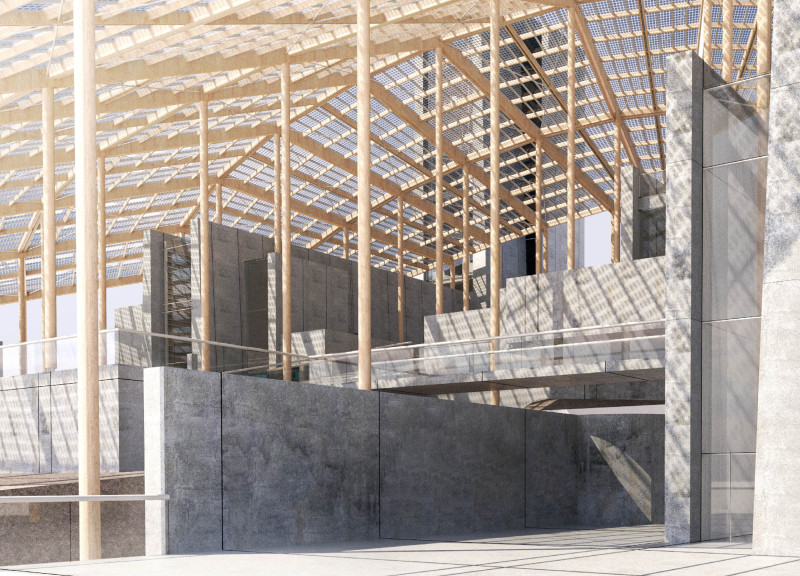5 key facts about this project
The architecture reflects an underlying theme of duality, particularly in its approach to light and space. This duality not only symbolizes the journey from life to death but also emphasizes the importance of connection with nature. Designed to encourage interaction with the surrounding landscape, large windows and open spaces facilitate a seamless transition between the indoors and outdoors.
Unique Design Approaches
The project's integration with its natural surroundings is a key feature, employing a design that encourages residents to engage with the East Richardson Bay views. The configuration of spaces, including both private reflection rooms and communal areas, is intentional in promoting various forms of interaction. The thoughtful arrangement allows occupants to select their level of engagement with both nature and each other.
Architectural elements such as large wooden pillars and a cantilevered roof structure play a critical role in the building’s stability and aesthetics. The roof, designed to filter soft natural light, significantly influences the interior ambiance, creating a calming environment through varying light sensations. The extensive use of glass enhances this effect, allowing full visibility of the landscape, thus connecting the occupants to the exterior world.
Material selections—prevalent use of concrete, timber, glass, and metal—are chosen not only for their structural qualities but also for their emotional resonance. Concrete provides a sturdy foundation, while timber warms the space, and glass facilitates interaction with light and the natural surroundings. The balanced use of these materials articulates the essence of the project, exemplifying a mindful approach to both form and function.
Functional Design and User Experience
Solid Light includes distinct functional zones, each tailored to specific activities. Private reflection rooms provide sanctuary and solitude, while the communal areas invite shared experiences and collective healing. Transition spaces, such as hallways, serve as connectors, inviting movement and fostering exploration throughout the facility.
The lighting strategy within the design complements the overall purpose of the project. It leverages both natural and artificial sources to maintain a consistent, inviting atmosphere throughout the day and night. The color palette, dominated by neutral tones, adds to the sense of calm and continuity, ensuring that the focus remains on the user experience.
As you consider the distinct architectural elements of "Solid Light," explore further details within the architectural plans, sections, and designs to understand the depth of the project’s approach. Discover how the integration of these architectural ideas can influence the experience of inhabitants in this thoughtfully designed environment.























